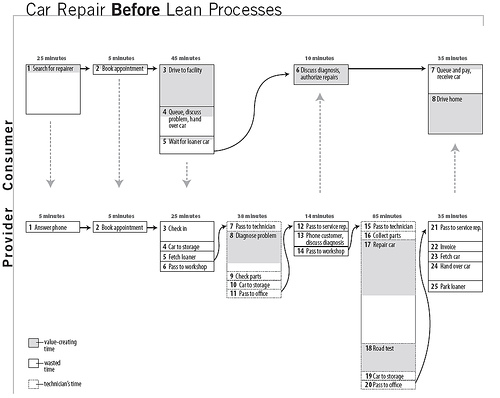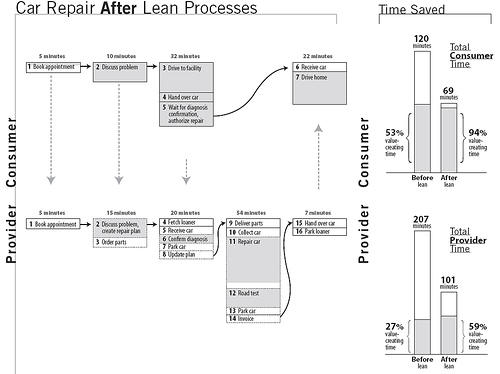Very few service providers, regardless of service, look at the customer’s experience — from the customer’s point of view. If they did, service providers would realize that customer’s wait around a lot and much of the customer’s time is wasted.
Queue’s can be an effective way to organize. The key is in managing the queue and eliminating time-traps and waste where we can find them. From the customer’s point of view, the psychology of queues require that there be some value-added result as a consequence of waiting in a queue and that the customer is made aware of the process. Sometimes, we realize after waiting, that the service provider wasn’t able all along to provide the right service, or that the service completely didn’t satisfy — both of which makes the “waiting” feel even worse than it does. All in all, a bad customer experience.
About 4 years ago, a small team and I reduced Patient Wait Time in a high volume Ophthalmic Clinic by 17%. We did this using the principles of Toyota Production System, or Lean Manufacturing. Below is an example of how to provide a better Customer Experience by not wasting the Customer’s Time.
One of the best ways to view what the customer’s experience looks and feels like is to create a Consumption Map. Below is a Consumption Map of a Car Repair Experience:


After some intuitive and innovative process improvement, the Consumption Map can look radically different and feel much better for the customer; in other words, a much better customer experience.









ha! im so glad to know that there’s still some people who understands the value of ” customers “. i had a fight with the salon owner earlier this evening. He has a newly opened salon and God! the fact that its newly opened… he doesnt know how to treat his customers that well….
I think it is worth pointing out that this material is based off of the book “Lean Solutions” by Womack and Jones.
@Mark,
Thanks for the comment. I haven’t read that book; I’ve spoken with Jim on a few occasions and have also spent some time at Toyota Hebron — Toyota’s supply distribution hub and learned TPS first-hand for warehousing and fulfillment. TPS for consumption is a fascinating topic and Jim pointed this article to me and that’s the source of this blog post. I mention this point above also.
Thanks for reading.
Pete
Wait a minute – the second diagram eliminates the whole searching for a repairer step. How’d that happen? Did I miss something? Good post, though. 🙂 I used to love these sorts of problems when I was in college – my major, Decision Information Sciences, deals with these sorts of issues and is a fascinating area I would recommend for others who may also be interested in this.
A clinic already has your paper work filled out because the parking garage had you enter name to enter parking garage. Your assigned a parking spot, you then go in the clinic. While picking up a pager you are standing on a scale that logs your weight. You then proceed into the shopping center until your pager goes off to see your doctor. The que is the shopping center. This allows for more time with doctor creating better diagnosis.
Best,
David